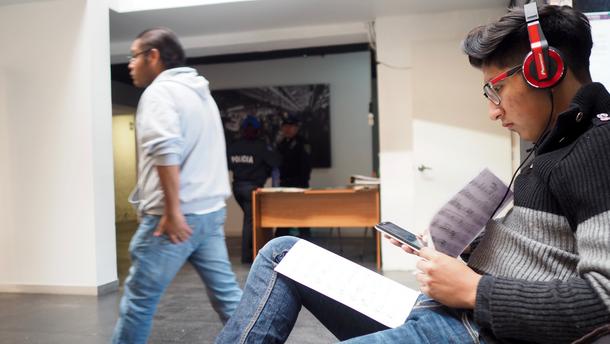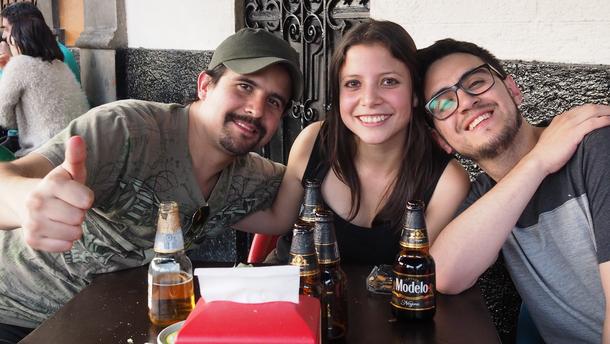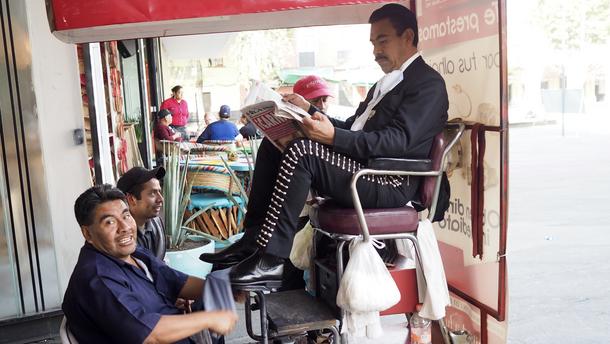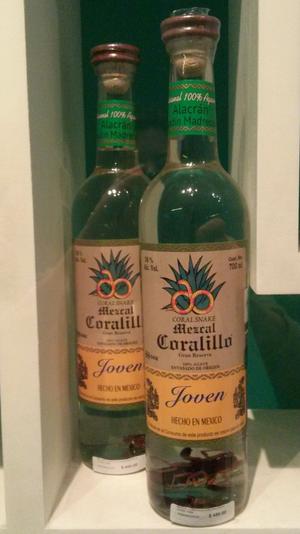Cultura Mariachi en México: mucho más que Plaza Garibaldi
Vídeo: Me siento orgulloso de ser Mariachi
Log into your Vimeo account to see the video.
Being a Mariachi musician is usually a profession you’re born into. Most musicians have inherited the music from their father or grandfather and continue the tradition, but for José Carlos, it was a deliberate choice to move to CDMX and study at La Escuela de Mariachi Ollín Yolitztli and work as a Mariachi musician to pay the tuition fee.
Hear him tell about his life as a student and Mariachi musician and, as the interview evolves, a considerable amount of other concerns and obligations compared to the average student.
Vocabulario al capítulo
- Sustantivos
Año Nuevo m
Navidad f
Tequila
anhelo m
artista m/f
cerveza f
clase f
deberes m pl
esposa f
fama f
grupo m
guitarra f
meta f -
música f
músico m/f
orquesta f
pareja f
traje de gala m
trompeta f
violín m
Verbos
agradar m io
aprender >< enseñar
cantar
contratar
estar de fiesta
molestar m io -
mudarse
nacer
perder /ie
sentirse /i
tocar (un instrumento)
tomar
adjetivos y otras palabras
borracho adj
bueno >< malo adj
casado
mujeriego adj
orgulloso adj
único adj
World Cultural Heritage at the Mariachi School

If you discuss Mariachi music with a Mexican, it will often bring out a smile: the musicians are associated with party and festivity, but are usually not regarded with the respect they deserve among Mexicans. It wasn’t until UNESCO declared the Mariachi tradition Immaterial World Cultural Heritage (Patrimonio Cultural inmaterial de la Humanidad) in 2011, that the idea of establishing a school for Mariachi music in CDMX was taken seriously, although the tradition was held in high esteem in, for example, the USA and Japan and Mariachi schools already existed in several other countries.
In 2013 La Escuela Mariachi Ollín Yoliztli, located at Plaza Garibaldi, was inaugurated. The school is open to all students, but most students come from Mariachi families and many already work as Mariachi musicians, and study to get a formalised education to improve technically.
At school they receive both practical and theoretical tuition from teachers from universities and conservatories. There is no doubt that the high standard of the school will also affect the image of the Mariachi tradition in the future.

Mariachi music is the soundtrack of the life and parties in Mexico or as here, of a Sunday out at the Plaza Garibaldi.
Plaza Garibaldi
Plaza Garibaldi is situated not far from the center of Mexico City with Bellas Artes and La Torre Latinoamericana, but has its very own atmosphere.
Around the square, smaller groups of musicians are playing or waiting for customers and people come here to hire a musician for the next party or just to party here and now.
To be a Mariachi musician at the Plaza Garibaldi you must have a licence and although the heavily worn jackets and trousers you occasionally see, bear witness to the fact that the licence does not always ensure a good salary, the Mariachi music at the square provides an income for a lot more people than just the musicians.
At the square you also find the legendary Salón Tenampa, where the list of different brands of Tequila occupies several pages of the menu. Salón Tenampa is also the place where the legendary singer Chavela Vargas was supposed to have dried out the whole bar on one of her drinking binges in the 60s.


Museo del Tequila y el Mezcal
At the square you also find the legendary Salón Tenampa, where the list of different Tequilas fills several pages on the menu, and where the singer Chavela Vargas was supposed to have emptied the whole bar on one of her drinking binges in the 60s.
At the end of the square you also find the museum for Tequila and Mezcal, which seems appropiate, considering the amount of alcohol that is consumed on a daily basis at the square.
If you've heard of Mezcal with worms, here you find the concept taken to a whole new level with bottles containing snakes and scorpions too. The name 'Agave Macho' seems well chosen here.


How much do you remember?
1)Ollín Yoliztli es el nombre de...
2)José Carlos es de ...
Nació en Puebla
3)José Carlos vive...
Vive con su pareja y su hijo
4)¿A su mamá le gusta que José Carlos sea Mariachi?
Al principio no le agradaba la idea porque los mariachis tienen mala fama
5)Los Mariachis tienen fama de...
6)La pareja de José Carlos..
Su pareja estudia danza folclórica y también es artista
Más sobre...

Chavela Vargas (1919-2012) was one of the great interpreters of Rancheras. She had her heyday in the 50s, 60s and early 70s, but made a formidable comeback around the turn of the millennium, with the help of the Spanish film director Pedro Almodóvar amongst others.
She also starred in the film Frida about the Mexican painter Frida Kahlo, whom she knew personally and had an affair with in her youth. Look up Chavela Varga's interpretation of the classic Mexican song La Llorona on youtube for a taste of her strong voice and very personal style of singing.
Guadalajara The classic mariachi song in the video, was also interpreted by Elvis Presley the movie 'Fun in Acapulco from 1963'. Try looking up 'Guadalajara' and 'Elvis' to see a quite outdated Northern American view on Mexico.
The Brotherhood of Mariachis Find out more about the Mariachi brotherhood and see them celebrate their patron saint, Santa Cecilia: Fiesta Patronal de Santa Cecilia
Mariachi music historically and the different styles: See more about the Mariachi suit and the different styles on the next page Historia de la tradición Mariachi – revolución y Charros
